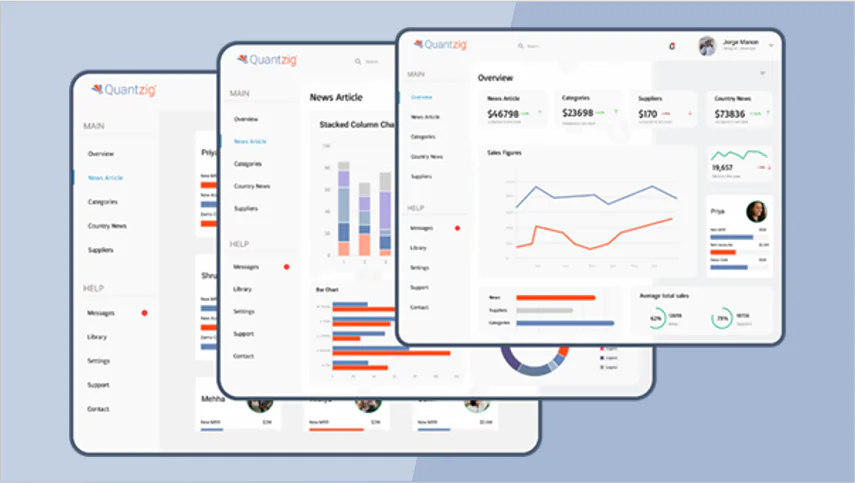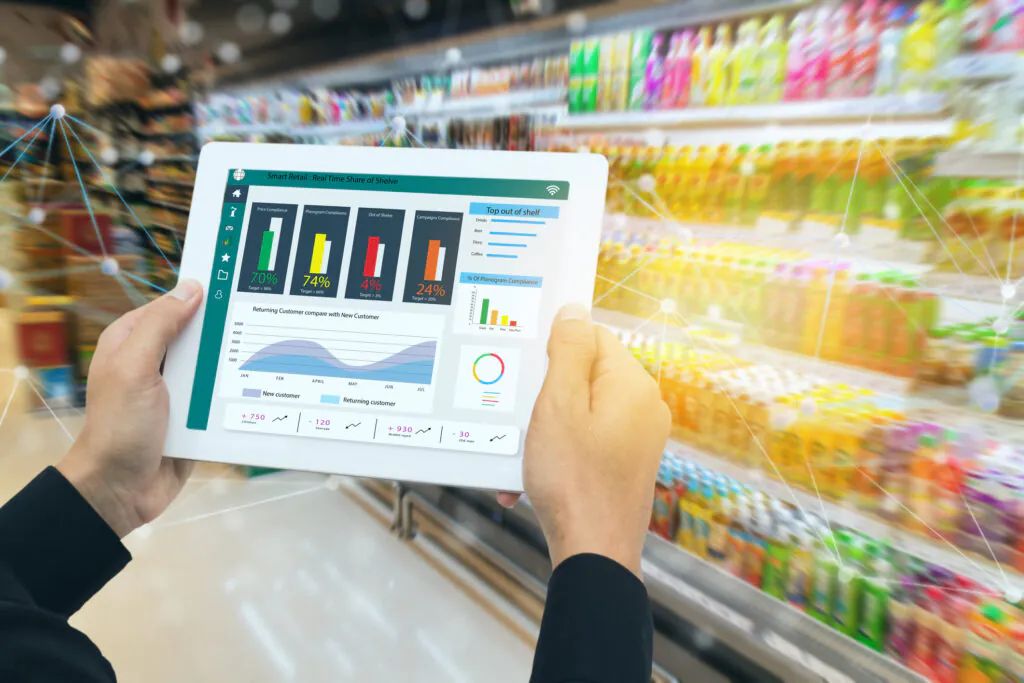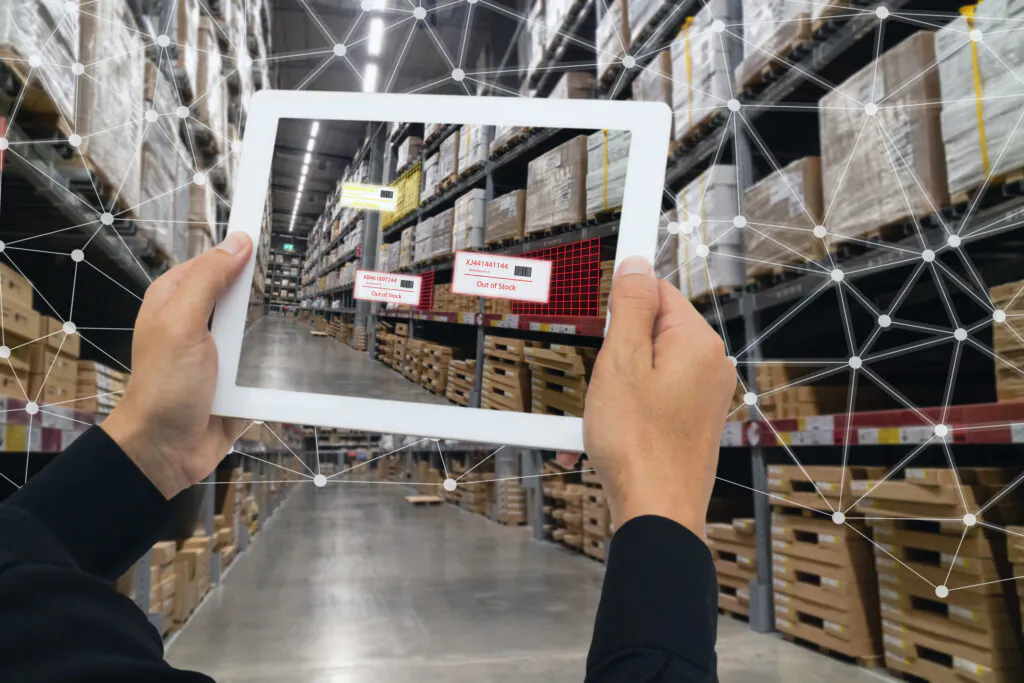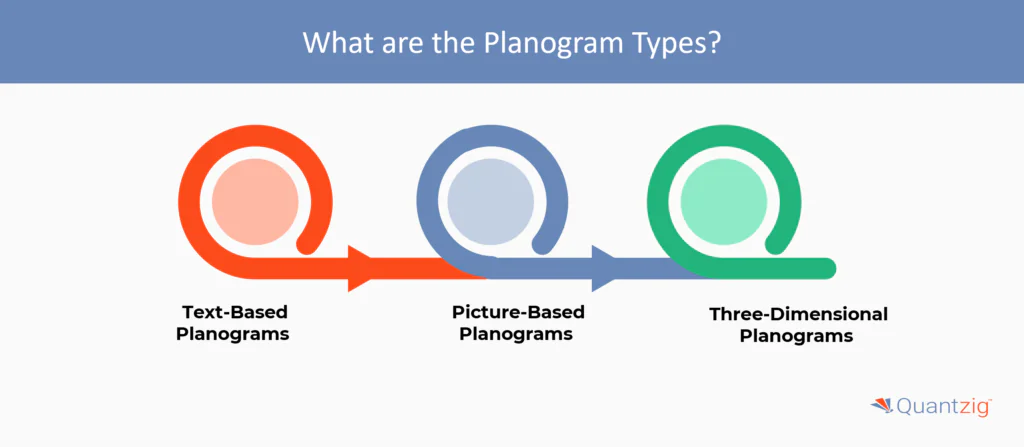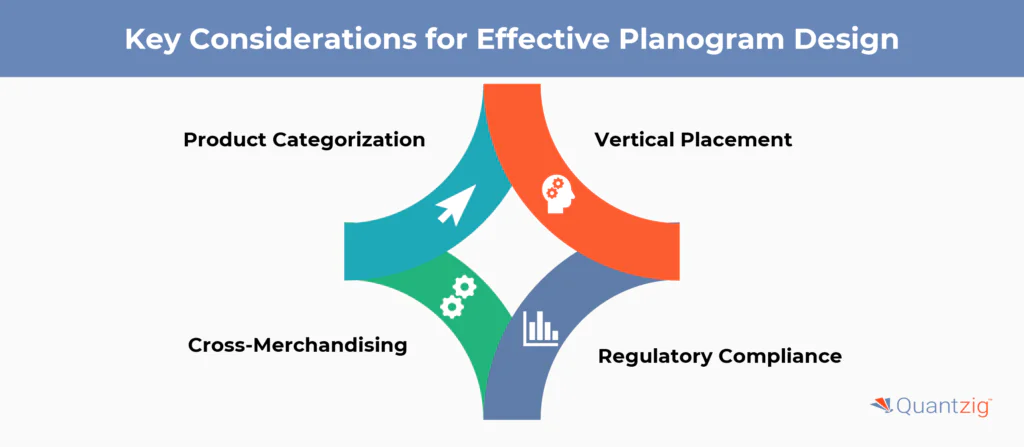Written By: Associate Vice President, Analytics and Data Strategy, Quantzig.
Table of Contents
Table of Content
- Introduction to Planogram Benefits
- What is a Planogram?
- Importance of Planogram for Businesses Across the World
- What are the Planogram Types?
- How do You Make an Effective Planogram?
- What are the Key Planogram Benefits?
- What Should We Keep in Mind When Creating a Planogram?
- Conclusion
Introduction to Planogram Benefits
In the intricate realm of retail, the alignment of organization and efficiency remains paramount for sustainable success. The art and science of retail encompass several critical facets, from astute inventory management and strategic space planning to impactful visual merchandising and marketing effectiveness. Central to this multifaceted landscape is the concept of a planogram, a pivotal tool that harmonizes product placement with store layout optimization. By integrating data-driven sales analysis, businesses can meticulously design assortments tailored to customer preferences, thereby elevating the overall customer experience.
Visual merchandising, in this context, transcends mere aesthetics; it serves as a strategic lever to bolster marketing effectiveness and profitability. Effective product placement on shelves, informed by sales analysis and data insights, amplifies inventory management capabilities. Such precision ensures that the assortment resonates with customer expectations while maximizing space planning efficiency. Consequently, this synergy fosters a cohesive strategy that not only enhances the retail layout but also drives sales and profitability.
Request a demo to experience the meaningful insights we derive from data through our analytical tools and platform capabilities. Schedule a demo today!
Request a Free DemoWhat is a Planogram?
Retailers are always under pressure to maximize their performance and look for every single ounce of efficiency. Since they operate on a slim margin, they have to look for ways that boost revenue by as little as 1%. Although it may be difficult to ascertain the magnitude of the effect of certain strategic moves, one can say with clear certainty that a planogram is essential for a retailer’s success.
A planogram is a diagram that details how and where specific products are placed on a retail shelf or displayed to increase customer purchases. The map is so detailed that it enlists how many facings a certain product should have on the shelf, how high or low should the product be placed, and what products should surround it. This gives store managers a fair idea of how products should be displayed and stocked, which, in turn, allows them to track and improve success. But will it help increase sales or customer satisfaction? What exactly are the benefits of using a planogram?
Why is Planogram Important for Businesses Across the World?
In the rapidly evolving retail landscape, businesses are continuously seeking innovative strategies to enhance efficiency, optimize product placement, and boost sales. One such indispensable tool that has gained significant traction is the planogram. By leveraging advanced analytics and data-driven insights, businesses can create planograms that resonate with customer preferences and enhance the overall shopping experience.
1. Compliance with Global Standards and Best Practices
Businesses must ensure strict adherence to compliance guidelines, ensuring that every planogram design aligns with overarching management strategies and objectives. This fosters consistency across various store locations and strengthens brand character and identity. Maintaining a uniform store layout and visual appeal, irrespective of geographic location, reinforces brand image and customer loyalty.
2. Integration of Planogram Software Solutions
The integration of sophisticated planogram software solutions, such as Relex Solutions, becomes paramount in the era of digital transformation. These tools offer unparalleled capabilities in space planning, inventory management, and customer analytics. By harnessing the power of artificial intelligence and advanced analytics, businesses can derive actionable insights into shopper behavior, product preferences, and purchasing patterns, enabling them to optimize product assortments and shelf allocations.
3. Compliance with Regional Regulations and Guidelines
As businesses navigate the complexities of global markets, ensuring compliance with regional regulations and guidelines is crucial. This necessitates meticulous attention to detail, from product packaging to aisle layouts, ensuring alignment with local compliance standards. Simultaneously, businesses must prioritize user-centric design principles, enhancing the overall shopping experience and customer satisfaction.
4. Optimizing Efficiency and Sales through Planograms
Planograms serve as detailed blueprints, dictating the optimal placement and arrangement of products within aisles and store layouts. By leveraging advanced analytics and data-driven insights, businesses can create planograms that resonate with customer preferences, thereby enhancing the overall shopping experience. This not only fosters consistency across various store locations but also strengthens brand character and identity, ultimately leading to increased efficiency and sales.
In conclusion, planograms have become an indispensable tool in the retail industry, enabling businesses to optimize product placement, enhance customer experiences, and drive sales. By adhering to global standards, integrating advanced software solutions, and prioritizing compliance with regional regulations, businesses can harness the power of planograms to stay ahead in the competitive retail landscape.
Planogram Types: Optimizing Retail Layouts
Retailers have a range of planogram options to choose from, each offering unique benefits and capabilities to enhance product placement and store design.
1. Text-Based Planograms
The simplest form of planograms, text-based layouts detail the product names and their designated shelf locations. While straightforward to create, these planograms can be less intuitive and slower to implement compared to more advanced formats.
2. Picture-Based Planograms
Offering greater visual detail, picture-based planograms not only specify product placement but also illustrate the desired merchandising and display techniques. This added layer of visual information helps retailers better envision the final in-store layout.
3. Three-Dimensional Planograms
Representing the most comprehensive approach, 3D planograms provide a fully immersive, three-dimensional view of the entire store or department layout. These advanced planograms enable retailers to visualize product quantities, signage, and other critical design elements, facilitating a seamless transition from planning to execution.
The choice of planogram type should be guided by the retailer’s specific needs, resources, and desired level of detail. By leveraging the right planogram format, retailers can optimize product placement, enhance the shopping experience, and drive sales across their store network.
How do You Make an Effective Planogram?
To create an effective planogram, retailers must consider several key factors.
- First, the layout should be tailored to the target audience, meeting their needs and preferences.
- Second, the planogram should maximize available retail space for efficient product display.
- Third, product placement should be logical and aesthetic, based on sales data, category priority, and product parameters.
- Fourth, visual accents like size, color, and relief should be used to attract attention and highlight important products.
- Fifth, the planogram should adapt to changes in the product range and be updated regularly.
- Finally, the layout should be data-driven, with product placement based on sales and inventory data to ensure optimal shelf placement.
By incorporating these principles, retailers can develop planograms that meet sales goals, attract customers, and optimize product positioning for maximum impact.
What are the Key Planogram Benefits?
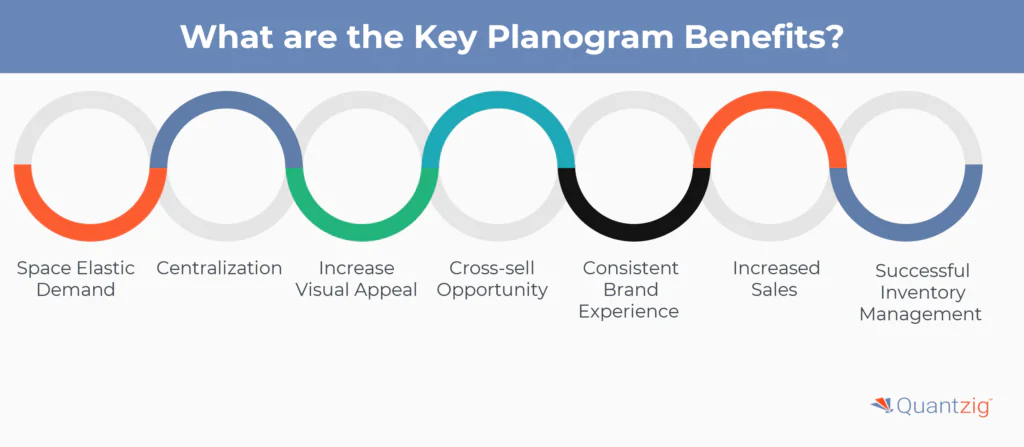
Planograms are a powerful visual merchandising tool that can significantly enhance a retailer’s operational efficiency and sales performance. By leveraging data-driven insights to optimize product placement and store layouts, planograms offer a range of compelling benefits that can give retailers a competitive edge.
1. Space Elastic Demand
Believe it or not, the amount of facings a product is allocated has a substantial impact on the sales of your products. So it is important to ascertain that the products which are popular and profitable get enough space allocation on your shelf. One way to ensure this happens is to use data. With optimum space allocation, the limited shelf space will give back the maximum amount of profit. However, when this principle is not properly leveraged, the real estate cost will start to eat through your profits and the performance will take a hit. Apart from sales, it may also affect retailers’ stock levels.
2. Centralization
Apart from dictating the layout of the store, a planogram also ensures consistency in all retail activities. A planogram provides the opportunity to centralize the sales strategy by dictating product layouts. As a result, there will be a uniform customer experience no matter which store they visit. For instance, no matter which part of the world you are in and enter a TESCO store, it will all look the same, which makes it easier for customers to navigate.
3. Increase Visual Appeal
Manufacturers usually place a lot of importance on product packaging. As a result, there are multiple colors, shapes, and textures of a product when placed on a retail shelf. An improper arrangement can look haphazard and unpleasant. However, using a planogram, ensures visual merchandising is looked after. The improved aesthetics improve the customer’s mood and draw attention to specific areas or items to boost sales.
4. Cross-sell Opportunity
Customers may arrive at a retail location with the intention of purchasing pre-determined items off their shopping list. However, they end up purchasing more items than there was on the list, mostly due to impulse buying. Also, placing complementary and supplementary items next to each other in a logical sequence increases shopper convenience. As a result, customers end up encasing more out of their wallets by making more unplanned purchases.
5. Consistent Brand Experience
Planograms enable retailers to maintain a consistent brand image and shopping experience across all store locations. By standardizing product placement and visual merchandising, planograms ensure that customers encounter a familiar and cohesive environment, fostering brand loyalty and trust. This consistency reinforces the retailer’s brand identity and creates a seamless experience for customers, regardless of the store they visit.
6. Increased Sales
Effective planogram design can strategically position high-margin or impulse-purchase items, making them more visible and accessible to customers. This targeted product placement can lead to increased sales and higher average transaction values. By understanding customer behavior and preferences, retailers can optimize their planograms to showcase the most profitable products, driving sales and enhancing overall profitability.
7. Successful Inventory Management
Planograms provide retailers with a comprehensive view of their inventory, enabling them to make informed decisions about product assortment, replenishment, and space allocation. This data-driven approach helps minimize out-of-stocks and optimize inventory levels, leading to improved operational efficiency and profitability. By aligning product placement with customer demand, retailers can ensure that the right products are available in the right quantities, enhancing the overall shopping experience and reducing costly inventory issues.
In conclusion, the strategic implementation of planograms can be a game-changer for retailers, helping them create consistent brand experiences, boost sales, enhance visual appeal, and effectively manage their inventory. By leveraging the power of data-driven insights, retailers can stay ahead of the competition and deliver exceptional customer experiences.
Experience the advantages firsthand by testing a customized complimentary pilot designed to address your specific requirements. Pilot studies are non-committal in nature.
Request a Free PilotWhat Should We Keep in Mind When Creating a Planogram?
In the competitive landscape of chain stores, the importance of a planogram cannot be overstated. It plays a crucial role in enhancing customer satisfaction by strategically utilizing sales data and point of sale information to optimize shelf space plans and space plans. The integration of planogram software facilitates the creation of various planogram types, such as text-based planograms, picture-based planograms, and three-dimensional planograms, ensuring effective and visually appealing product placement. By continuously measuring the effectiveness of these planograms, retailers can fine-tune their strategies to maximize sales and operational efficiency.
When creating a planogram, retailers must keep several crucial factors in mind to optimize product placement and enhance the overall shopping experience.
1. Product Categorization
Organizing products into intuitive and recognizable categories is essential for improving customer navigation and product discoverability. By grouping related items together, retailers can make it easier for shoppers to find what they need, leading to increased satisfaction and sales.
2. Vertical Placement
The height at which products are placed on the shelves can significantly impact their visibility and accessibility. Positioning high-demand or impulse items at eye level ensures they capture the attention of customers, while lower shelves can be used to target children or showcase complementary products.
3. Cross-Merchandising
Strategically arranging complementary products in close proximity can encourage cross-selling and impulse purchases. By identifying product affinities and creating logical product pairings, retailers can leverage the planogram to drive incremental sales and enhance the overall shopping experience.
4. Regulatory Compliance
Retailers must also ensure that their planogram design adheres to all relevant regulations and industry standards, such as accessibility requirements and safety guidelines. Maintaining compliance not only protects customers but also safeguards the retailer’s brand reputation and operational efficiency.
By carefully considering these key factors, retailers can create planograms that optimize product placement, improve customer navigation, and ultimately drive increased sales and loyalty. The strategic application of planogram design principles can give retailers a competitive edge in the dynamic retail landscape.
Get started with your complimentary trial today and delve into our platform without any obligations. Explore our wide range of customized, consumption driven analytical solutions services built across the analytical maturity levels.
Start your Free TrailConclusion
In conclusion, planogram benefits extend far beyond mere shelf arrangements and product placements. By integrating advanced analytics, compliance measures, and innovative solutions like Relex Solutions, businesses can unlock unprecedented efficiencies, enhance customer experiences, and drive sustained profitability across diverse markets and industries. Embracing these strategies equips businesses with the tools and insights necessary to thrive in an increasingly competitive global landscape.
In essence, embracing planogram benefits empowers businesses across the world to navigate the complexities of modern retail. By harmonizing organization, efficiency, and strategy, businesses can unlock unparalleled opportunities to optimize the customer experience, elevate marketing effectiveness, and drive sustained profitability in an ever-evolving global marketplace.
